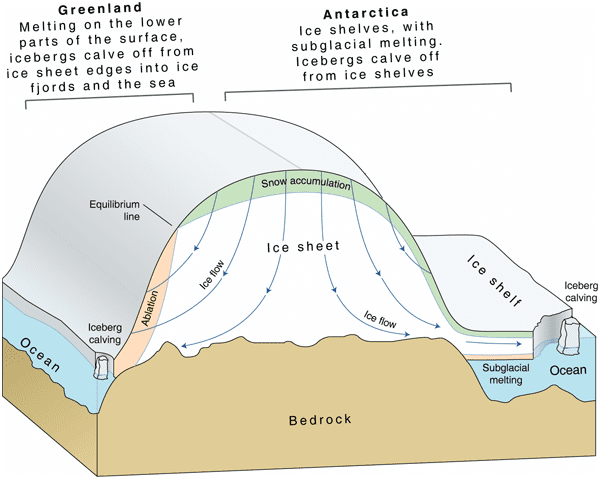Four new climate research papers published in the latest edition of the Proceedings of the National Academy of Sciences (PNAS) show that the global mean sea level is rising faster than it has in more than 2,000 years. All four research teams concluded that the roughly coincident rise in global mean temperatures is driving sea level rise and that human-caused greenhouse gas (GHG) emissions, in turn, are driving global mean temperature higher.
Rutgers University geologist Benjamin Horton, who directed one of the studies, noted that the research results aren’t based on models or simulations; they are based on historic and present-day data gathered in the field.
Forams, fossils and sea level rise
Data gathered from fossils and rocks along the coast of Antarctica provide a detailed record of changes in sea level and the Antarctic ice sheet. On a cautionary note, this research suggests that the global sea level can rise much faster than has been thought, University of Florida geologist Andrea Dutton, an expert in reconstructing ancient sea levels, pointed out.

Seemingly small fluctuations in temperature have led to measurable changes in ocean levels over the past 3,000 years, according to the first of the studies, in which researchers collected data from 24 sites around the world. That included data from tide gauges and where that wasn’t available, data on isotopic carbon found in the shells of fossil foraminifera — microscopic, single-cell plankton that produce delicate shells of calcium carbonate.
Sea level dropped an estimated 8 centimeters (3.1¨) between 1000 and 1400 CE as global temperature dropped just 0.2ºC (0.36ºF), for example, the research team found. They’ve risen about 14 cm (5.5¨) in the 20th century.
The researchers attributed at least half of that rise to climate change induced by humans, specifically rising GHG emissions. Looking out to the end of this century, they forecast ocean levels will rise another 0.24-1.3 meters (0.79-4.26′), which is very close to that made by the U.N: Intergovernmental Panel on Climate Change (IPCC).
Links to Rising GHG Emissions
In a second study, researchers used a different method – collecting data from historical records – but wound up with almost the same results. The convergence of the two lends confidence as to their accuracy, unless they both are based on flawed assumptions, another Rutgers scientist, Robert Kopp noted. Kopp did most of the statistical work for the first study.
A third climate research paper documents results gleaned from a 1.1 km-long plug pulled up from beneath the Antarctic seabed of McMurdo Sound between 14 million and 20 million years ago. Carbon dioxide levels at that time are thought to have risen only slightly above the level they are today.
Originating in an ice sheet floating on the sound, the fossils found in the mud and rock that massive shifts in the extent of the ice sheet are in sync with changes in atmospheric CO2. Ice sheets retreated far inland when CO2 is thought to have been above 500 ppm, about 100 ppm higher than it is today.
Computer simulations of the advance and retreat of Antarctic ice sheets based on a new climate model developed by Rob DeConto of the University of Massachusetts, Amherst, match the results emerging from the study based on sediment cores. However, the simulations didn’t exhibit the dramatic shifts indicated in the geologic record.
The results of DeConto’s new climate model indicate that changes in Antarctic ice may lead to sea levels rising more rapidly than forecast in the first study and by the IPCC. “It may be that the Kopp approach and the IPCC are both wrong,” DeConto was quoted as saying. “Once we start seeing a lot of meltwater on the ice shelves around Antarctica, what’s that going to do?”
*Image credits: National Snow & Ice Data Center (NSIDC)


